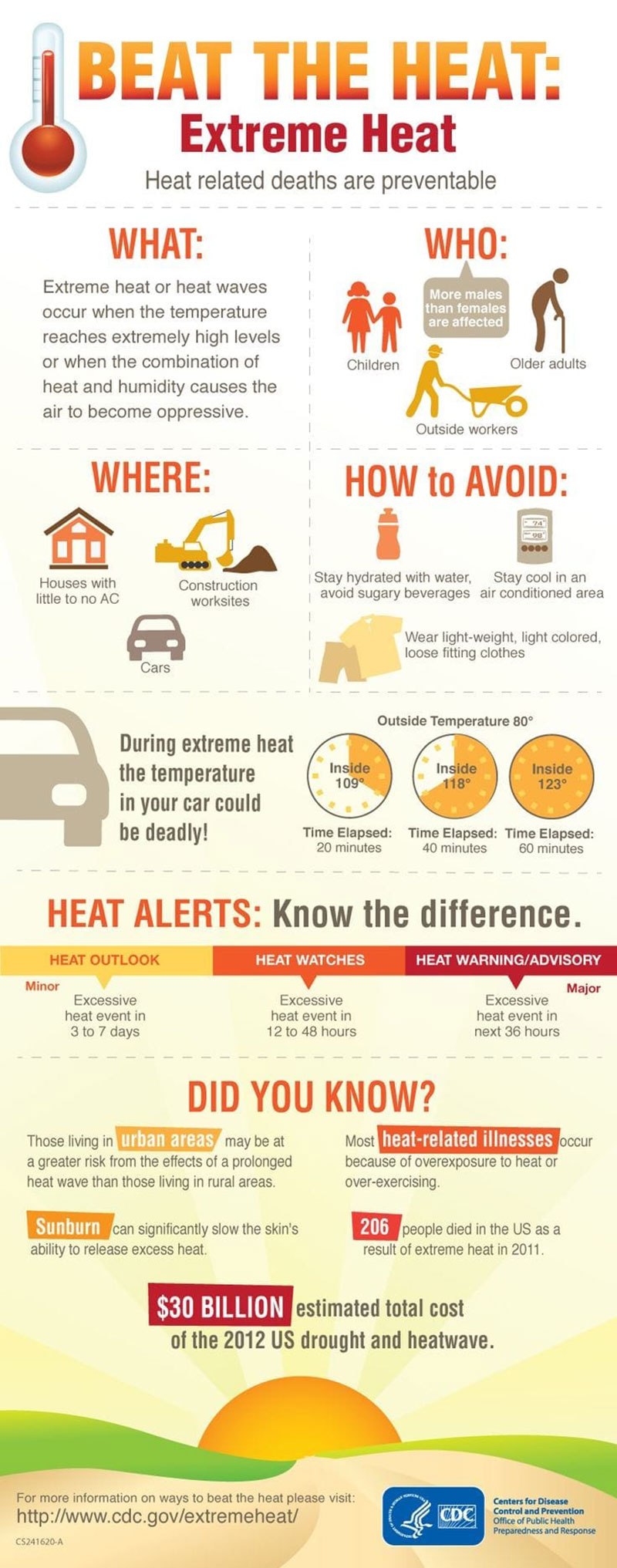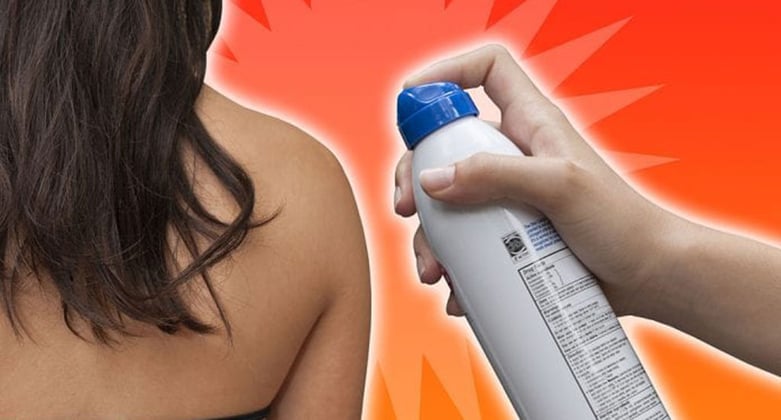Summer heat poses health risks to older adults and folks with chronic medical conditions. As North America approaches some of the year’s hottest temperatures, it’s a good idea to know just who is at risk when the mercury rises and how to help people avoid hyperthermia and heat stroke.
The UMHS Endeavour looks at the risks involved for the elderly and people with medical conditions and what the public and students at American and Caribbean medical schools need to know to advise future patients. The article is based on information from a National Institute on Aging post “Advice for Older People Staying Safe in Hot Weather” by Kim Calvin.
Hyperthermia & Other Heat-Related Illnesses
The National Institute on Aging (NIA), part of the National Institutes of Health, offers the following tips and advice to avoid illness during hot weather.
“Hyperthermia is caused by a failure of the heat-regulating mechanisms of the body. Heat fatigue, heat syncope (sudden dizziness after prolonged exposure to the heat), heat cramps, heat exhaustion and heat stroke are forms of hyperthermia. Older adults are at risk for these conditions, and this risk can increase with the combination of higher temperature, individual lifestyle and general health.”
“Lifestyle factors can include not drinking enough fluids, living in housing without air conditioning, lack of mobility and access to transportation, overdressing, visiting overcrowded places and not understanding how to respond to hot weather conditions.”
“Older people, particularly those with chronic medical conditions, should stay indoors in cooler spaces on hot and humid days, especially when an air pollution alert is in effect. People without air conditioners should go to places that do have air conditioning, such as senior centers, shopping malls, movie theaters and libraries. Cooling centers, which may be set up by local public health agencies, religious groups and social service organizations in many communities, are another option.”
Below are factors that may increase the risk of hyperthermia:
- Dehydration.
- High blood pressure or other health conditions that require changes in diet. For example, people on salt-restricted diets may be at increased risk. However, salt pills should not be used without first consulting a doctor.
- Heart, lung and kidney diseases, as well as any illness that causes general weakness or fever.
- Use of multiple medications. It is important, however, to continue to take prescribed medication and discuss possible problems with a physician.
- Reduced sweating, caused by medications such as diuretics, sedatives, tranquilizers and certain heart and blood pressure drugs.
- Age-related changes to the skin such as poor blood circulation and inefficient sweat glands.
- Being substantially overweight or underweight.
- Alcohol use.
Heat Stroke
You may have heard the term “heat stroke,” and it’s more than just being too hot. The National Institute on Aging defines heat stroke as “a life-threatening form of hyperthermia,” which occurs when the body is overwhelmed by heat and unable to control its temperature.
The signs and symptoms of heat stroke include:
- A significant increase in body temperature (generally above 104 degrees Fahrenheit), changes in mental status (like confusion or combativeness),
- A strong rapid pulse, lack of sweating, dry flushed skin, feeling faint, staggering or coma.
- Seek immediate emergency medical attention for a person with heat stroke symptoms, especially an older adult.
If you suspect someone may be experiencing heat stroke, the National Institute on Aging advises:
- Get the person out of the heat and into a shady, air-conditioned or other cool place. Urge them to lie down.
- If you suspect heat stroke, call 911.
- Encourage the individual to shower, bathe or sponge off with cool water if it is safe to do so.
- Apply a cold, wet cloth to the wrists, neck, armpits, and/or groin. These are places where blood passes close to the surface of the skin, and the cold cloths can help cool the blood.
- If the person can swallow safely, offer fluids such as water, fruit and vegetable juices. Avoid alcohol and caffeine.
For more information, please visit http://www.nih.gov/
(Top photo) SUMMER HEAT SAFETY: Follow our tips for sun safety during the summer months. Image: FDA Graphic by Michael J. Ermath/Wikimedia Commons

Infographic: CDC
About UMHS:
Built in the tradition of the best US universities, the University of Medicine and Health Sciencesfocuses on individual student attention, maintaining small class sizes and recruiting high-quality faculty. We call this unique approach, “personalized medical education,” and it’s what has led to our unprecedented 96% student retention rate, and outstanding residency placements across the US and Canada. UMHS is challenging everything you thought you knew about Caribbean medical schools

Scott is Director of Digital Content & Alumni Communications Liaison at UMHS and editor of the UMHS Endeavour blog. When he's not writing about UMHS students, faculty, events, public health, alumni and UMHS research, he writes and edits Broadway theater reviews for a website he publishes in New York City, StageZine.com.















